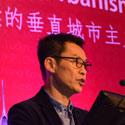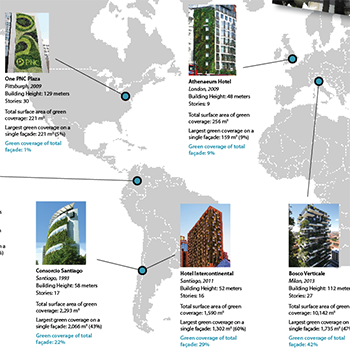Height rank
The Met
Bangkok
-
Metrics
You must be a CTBUH Member to view this resource.
Official Name
The Met
Type
Building
Status
Completed, 2009
Country
City
Address
Function
A mixed-use tall building contains two or more functions (or uses), where each of the functions occupy a significant proportion of the tower's total space. Support areas such as car parks and mechanical plant space do not constitute mixed-use functions. Functions are denoted on CTBUH "Tallest Building" lists in descending order, e.g., "hotel/office" indicates hotel function above office function.
residential
Structural Material
Both the main vertical/lateral structural elements and the floor spanning systems are constructed from steel. Note that a building of steel construction with a floor system of concrete planks or concrete slab on top of steel beams is still considered a “steel” structure as the concrete elements are not acting as the primary structure.
Reinforced Concrete
Both the main vertical/lateral structural elements and the floor spanning systems are constructed from concrete which has been cast in place and utilizes steel reinforcement bars.
Precast Concrete
Both the main vertical/lateral structural elements and the floor spanning system are constructed from steel reinforced concrete which has been precast as individual components and assembled together on-site.
Mixed-Structure
Utilizes distinct systems (e.g. steel, concrete, timber), one on top of the other. For example, a steel/concrete indicates a steel structural system located on top of a concrete structural system, with the opposite true of concrete/steel.
Composite
A combination of materials (e.g. steel, concrete, timber) are used together in the main structural elements. Examples include buildings which utilize: steel columns with a floor system of reinforced concrete beams; a steel frame system with a concrete core; concrete-encased steel columns; concrete-filled steel tubes; etc. Where known, the CTBUH database breaks out the materials used in a composite building’s core, columns, and floor spanning separately.
concrete
Height
230.6 m / 756 ft
Floors Above Ground
69
# of Apartments
370
# of Elevators
23
Top Elevator Speed
6 m/s
Tower GFA
124,885 m² / 1,344,251 ft²
-
By function
You must be a CTBUH Member to view this resource.
-
By material
You must be a CTBUH Member to view this resource.
Architect
Usually involved in the front end design, with a "typical" condition being that of a leadership role through either Schematic Design or Design Development, and then a monitoring role through the CD and CA phases.
Usually takes on the balance of the architectural effort not executed by the "Design Architect," typically responsible for the construction documents, conforming to local codes, etc. May often be referred to as "Executive," "Associate," or "Local" Architect, however, for consistency CTBUH uses the term "Architect of Record" exclusively.
MEP Engineer
Main Contractor
The main contractor is the supervisory contractor of all construction work on a project, management of sub-contractors and vendors, etc. May be referred to as "Construction Manager," however, for consistency CTBUH uses the term "Main Contractor" exclusively.
The main contractor is the supervisory contractor of all construction work on a project, management of sub-contractors and vendors, etc. May be referred to as "Construction Manager," however, for consistency CTBUH uses the term "Main Contractor" exclusively.
Other Consultant
Other Consultant refers to other organizations which provided significant consultation services for a building project (e.g. wind consultants, environmental consultants, fire and life safety consultants, etc).
Other Consultant refers to other organizations which provided significant consultation services for a building project (e.g. wind consultants, environmental consultants, fire and life safety consultants, etc).
These are firms that consult on the design of a building's façade. May often be referred to as "Cladding," "Envelope," "Exterior Wall," or "Curtain Wall" Consultant, however, for consistency CTBUH uses the term "Façade Consultant" exclusively.
Material Supplier
Material Supplier refers to organizations which supplied significant systems/materials for a building project (e.g. elevator suppliers, facade suppliers, etc).
Material Supplier refers to organizations which supplied significant systems/materials for a building project (e.g. elevator suppliers, facade suppliers, etc).
You must be a CTBUH Member to view this resource.
Owner/Developer
Pebble Bay Thailand Co. Ltd.
Architect
Usually involved in the front end design, with a "typical" condition being that of a leadership role through either Schematic Design or Design Development, and then a monitoring role through the CD and CA phases.
Usually takes on the balance of the architectural effort not executed by the "Design Architect," typically responsible for the construction documents, conforming to local codes, etc. May often be referred to as "Executive," "Associate," or "Local" Architect, however, for consistency CTBUH uses the term "Architect of Record" exclusively.
Structural Engineer
Worley Pte. Ltd.
MEP Engineer
Main Contractor
The main contractor is the supervisory contractor of all construction work on a project, management of sub-contractors and vendors, etc. May be referred to as "Construction Manager," however, for consistency CTBUH uses the term "Main Contractor" exclusively.
The main contractor is the supervisory contractor of all construction work on a project, management of sub-contractors and vendors, etc. May be referred to as "Construction Manager," however, for consistency CTBUH uses the term "Main Contractor" exclusively.
Other Consultant
Other Consultant refers to other organizations which provided significant consultation services for a building project (e.g. wind consultants, environmental consultants, fire and life safety consultants, etc).
Other Consultant refers to other organizations which provided significant consultation services for a building project (e.g. wind consultants, environmental consultants, fire and life safety consultants, etc).
These are firms that consult on the design of a building's façade. May often be referred to as "Cladding," "Envelope," "Exterior Wall," or "Curtain Wall" Consultant, however, for consistency CTBUH uses the term "Façade Consultant" exclusively.
Cicada Pte Ltd
KPK Group
Material Supplier
Material Supplier refers to organizations which supplied significant systems/materials for a building project (e.g. elevator suppliers, facade suppliers, etc).
Material Supplier refers to organizations which supplied significant systems/materials for a building project (e.g. elevator suppliers, facade suppliers, etc).
CTBUH Awards & Distinctions
Best Tall Building Asia & Australasia 2009 Award of Excellence
2009 CTBUH Awards
CTBUH Initiatives
The Met Chosen as Featured Building
15 February 2011 - Featured Building
Videos

18 September 2014 | Bangkok
The Tropical Skyscraper: Social Sustainability in High Urban Density
Asia’s rapidly growing metropolises demand an alternative strategy for city planning and architecture that addresses the need to live appropriately and sustainability with our tropical...
Research

16 September 2014
Green Walls in High-Rise Buildings
CTBUH Research
The latest CTBUH technical guide, Green Walls in High-Rise Buildings, provides a thorough investigation of the methods used around the world for implementation of vertical...
About The Met
This project demonstrates creative ideas for high-rise, high-density living in the tropics. The Met explores how aspects of low-rise tropical housing can be adapted to provide high amenity through indoor-outdoor spaces in the sky.
Most tropical high-rise housing in developing countries replicate cold-climate models, with sealed façades and a total reliance on air-conditioning. However, in the tropics, light winds, year-round balmy weather, constant temperatures and high humidity make outdoor living desirable. In addition, the environmental conditions at height in dense Asian cities are preferable to those near the ground—there is more privacy, better views, lower humidity, stronger breezes, better security, less noise and less dust. This development creates enjoyable tropical living conditions at extremely high densities (a plot ratio of 10:1). Located between two train stations, the development permits a higher use of existing infrastructure, and a practical way of dealing with Bangkok’s urban sprawl and bad traffic jams. In Bangkok, public transport is used by all sectors of society, as it is often the only way to move through the grid-locked city.
The design is inspired by traditional Thai forms— ceramic tiles, textiles and timber paneling—abstracted and used as a way to organize forms. The cladding, for instance, uses temple tiles as inspiration, while the staggered arrangement of the balconies recalls the Thai teak staggered paneling on traditional houses. The walls incorporate random inserts of faceted polished stainless steel, a contemporary interpretation of the sparkling mirrors incorporated into Thai temples, returning this delightful glittering effect at a scale appropriate to the vast city.
The design achieves tropical houses in the sky with breezeways, full exposure to light and views, outdoor living areas, planters and high-rise gardens, and open-air communal terraces with barbeques, libraries, spas and other facilities. These sky terraces, both private and public, link the blocks every five-stories, creating dramatic yet human-scaled external spaces in the sky.
The building is planted on every horizontal surface. Additionally, vertical faces are shaded by green creeper screens, rising up. Balconies are provided with private planters. All apartments are cross ventilated, and all face north and south. The staggered block arrangement gives all apartments access to light and air on all four sides. The design encourages and makes possible living without air conditioning.
Common areas are spread throughout the towers, offering inhabitants a variety of experiences, from the intricately designed carpet of water, stone and vegetation at ground level, to the extensive indoor-outdoor facilities at the pool level, to libraries, barbeques, and function areas at sky terraces that share the spectacular views from the highest floors among all the inhabitants.
Structural engineering is fully integrated with the architectural design. Built on a regular 9 meter (30ft) module, the structure works well with all the various functions—apartments, recreational facilities and car parking. Wind tunnel tests were carried out to ensure safety and comfort in sky terraces. Structural bracing was introduced at every 5 levels, which is used for sky gardens, private pools and common areas. As loads accrue, the columns get larger on the exterior rather than interior of the building, creating protected indoor-outdoor spaces for balconies and terraces, and allowing apartment layouts to be standardized, even at lower levels. These exposed buttress columns are both structurally rigorous as well as an architectural expression.
These ribs are illuminated at night, turning the large building into an elegant, vertical screen. The sky gardens are also illuminated. The orderly, elegant building makes an attractive addition to the chaotic skyline of Bangkok. With its openings to the sky behind, planted façades, balconies and sky gardens, the Met weaves nature into the concrete jungle of central Bangkok.
The design is an innovative solution to the issues of density in tropical Asian cities, and offers a new model for high-density tropical housing. The model of a naturally-ventilated, perforated, indoor-outdoor, green tower is a necessary alternative to the sealed, glazed curtain wall buildings being erected across tropical regions.
CTBUH Awards & Distinctions
Best Tall Building Asia & Australasia 2009 Award of Excellence
2009 CTBUH Awards
Research

16 September 2014
Green Walls in High-Rise Buildings
The latest CTBUH technical guide, Green Walls in High-Rise Buildings, provides a thorough investigation of the methods used around the world for implementation of vertical...

01 August 2009
Tall Buildings in Southeast Asia - A Humanist Approach to Tropical High-Rise
High-rise, high-density living has been embraced as a positive accommodation solution for many millions of people living in Asia's growing urban metropolis. This paper outlines...
Subscribe below to receive periodic updates from CTBUH on the latest Tall Building and Urban news and CTBUH initiatives, including our monthly newsletter. Fields with a red asterisk (*) next to them are required.
View our privacy policy










































